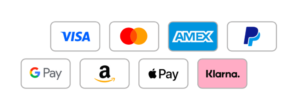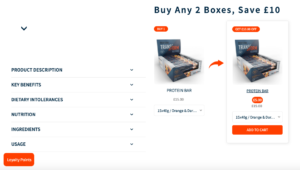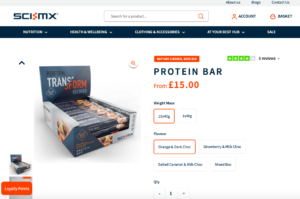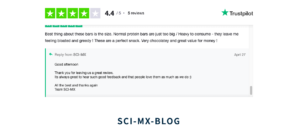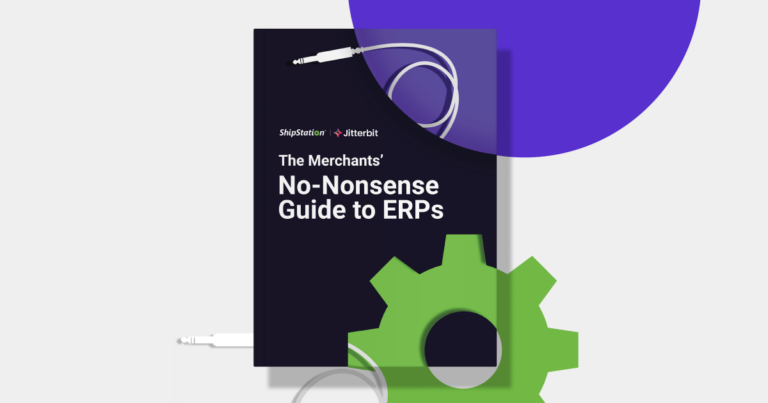Expert Tips To Make Your Shopify Plus Store Even Better

The world of ecommerce has never been busier. The number of ecommerce shoppers surged to 3.4 billion in 2020 and this trend shows no signs of slowing down, with the figure expected to grow 10% YoY to 3.8 billion in 2021.
With more and more consumers shopping online, this means competition to get their attention has never been tougher. For merchants looking to capitalise on this growing trend and expand their customer base as much as possible, it’s imperative to give customers the best possible experience.
This all starts with having the right platform. Shopify Plus is fast becoming the go-to platform for mid-enterprise level ecommerce businesses. And it’s easy to see why when you consider its benefits. Not only is Shopify Plus super fast and flexible, it also gives merchants access to a world-class app ecosystem and 24hr customer support. What’s not to love?
With that in mind, there are still plenty of things for merchants to do to make the most out of the platform so customers have the ultimate shopping experience.
1. Pin-sharp UX design
User experience (UX) is an essential part of the online customer journey and can be the difference between a good website and a great one. Also, if you want your Shopify Plus store to rank well on Google, UX matters.
Today, it takes customers 50 milliseconds — that’s 0.05 seconds — to form an opinion of your store that determines whether they stay or leave.
You need to capture a customer’s attention from the moment they arrive and make the best possible impression. The first way to do this is with high-quality imagery at the top of your Shopify store. We recommend displaying product imagery in a dynamic way, such as through video or a carousel. This allows you to showcase your winning products quickly without forcing a customer to deep dive into your store.
Check out Linda Farrow’s home page and the innovative way the brand used video content to showcase its newest product campaigns:
2. Eliminate friction at checkout
Never underestimate the power of a smooth checkout experience. Merchants spend a lot of time, effort and money trying to attract customers, but often they neglect the friction points that can encounter at checkout, which ultimately means a lot of lost sales.
So, what’s the answer? It’s all about streamlining and simplifying the checkout process, making it as easy as possible for customers to click the ‘buy’ button.
Here are a few things merchants can do:
-
Make account creation optional
One of the biggest bugbears out there is being asked to create an account at checkout to complete a purchase. Account registration may only take 40-90 seconds, but for a customer who wants to make a quick purchase, that’s a lot of effort. If you really require users to sign in, consider offering social media logins as an alternative option.
-
Be upfront about pricing
Poor pricing information can be a big conversion killer. Be honest about shipping costs or any other additional charges throughout the shopping journey. Make sure costs are clearly visible on product pages and any other sales pages.
-
Offer multiple payment options
Merchants risk losing 44% of customers if they don’t offer preferred payment methods. Be sure to integrate popular payment gateways such as PayPal and USA ePay. Display trustworthy card logos such as Amex, Mastercard and Visa on your store to increase trust with your customers. Also, we’d recommend installing ‘buy now, pay later’ options such as Klarna, which allow customers to spread the cost of their purchase. Not only does this cater to shoppers on tighter budgets, it’s proven to increase AOV. Why? Because splitting up a big purchase over monthly instalments makes it easier on someone’s wallet.
3. Increase site speed
Customers will abandon your store if it takes longer than 3 seconds to load. If your store lags, very few customers will stick around.
Fortunately, on Shopify Plus, site speed isn’t a problem, but there are a few things you can do to make sure your webpages are loading as quickly as possible:
- Remove excess apps
- Reduce image sizes
- Remove redirects
- Compress files
- Regularly test your site speed to identify any problem areas
4. SEO optimised content
For retailers looking to scale, it’s vital that you create SEO-optimised content.
But content is about more than just blogs and page titles jam-packed full of keywords, it’s also about producing interesting product descriptions, user-generated content such as reviews, and quality web copy.
In order to produce site pages that convert, and therefore rank well on search engines like Google, there are other elements to consider. This includes great product imagery, product suggestions, clear CTAs, detailed product information, such as size, colour, material, and good returns policies.
For example, SCI-MX’s product pages are a perfect example of the above:
5. Build backlinks to your store
Backlinks tell search engines that your store is credible. Think of it as word of mouth in the world of SEO. It’s an off-page optimisation strategy that can help you rank higher and convert more.
A great way to build backlinks, particularly on your product pages, is by reaching out to influencers and industry experts and asking them to mention your products in a blog or similar content with a backlink.
6. A/B Testing
Whether you’re A/B testing social media ads, email subject lines or product pricing, split testing is the best way to understand what drives the most conversion. If you’re not testing, then you’re losing out on sales.
Fortunately, Shopify Plus offers merchants lots of handy plugins that can make A/B testing easier. For example, Neat A/B Testing is an app that allows retailers to split test their product pages and helps to optimise important elements such as pricing, copy and images.
7. Think beyond the platform
Equipped with the world’s most powerful platform, merchants on Shopify Plus have an excellent foundation to build a successful ecommerce business on. But it shouldn’t end there.
In today’s competitive digital landscape, merchants need to go one step further by meeting their customers where they are the most. This all comes down to developing an effective omnichannel strategy.
To do this, merchants must determine where their customers like to shop, what social media channels they prefer to use and through which devices. From there, you can create a strategy for each channel and integrate this seamlessly within the customer journey.
An omnichannel experience is no longer a nice to have, it’s essential. Customers demand it, and it’s your job to give it to them.
Final word
Optimising your Shopify Plus store is a continuous process. You can fully optimise everything one day, and then suddenly it’s back to testing, data collecting and re-strategising. We recommend focusing on your customer data and industry insights to always stay one step ahead of the curve.
But if you need some assistance in optimising your Shopify Plus store’s performance, get in touch with Velstar’s team of conversion rate optimisation experts, and we’ll push your brand to the next level.
About Velstar:
We don’t just make websites; we create exceptional digital experiences that consumers love.We’re a full-service in-house Shopify Plus Partner agency, headquartered in the UK. Made up of 20+ ecommerce experts, we combine the most effective ecommerce design, development and growth strategies. From Platform Migration, User Experience & User Interface Design, to Digital Marketing, we have a proven track record when it comes to delivering outstanding ecommerce solutions and driving sales for our clients.

